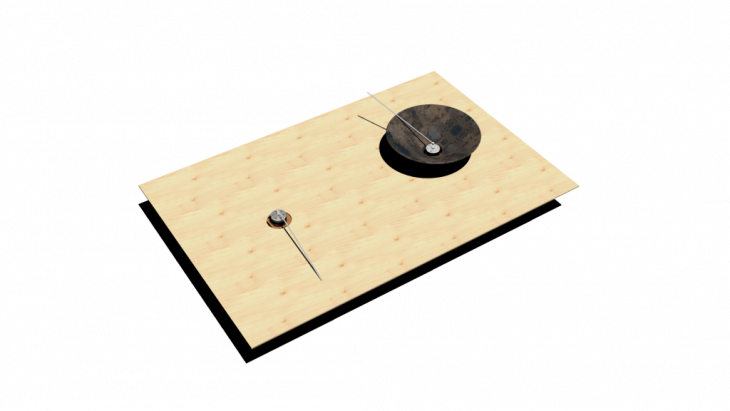
The project captures and transports noise pollution from Dubai into mechanical sound and melody within the installation. Based on input from a loudness sensor, an acceptable amount of noise will create a continuous sound through one device while an unacceptable amount of noise will create a rhythm through the other device. Based on the input data, the sound is created by a motorized rotating pin that scrapes against the material of the table which helps to accentuate the sound being created. The different sounds will overlap to create a melody.
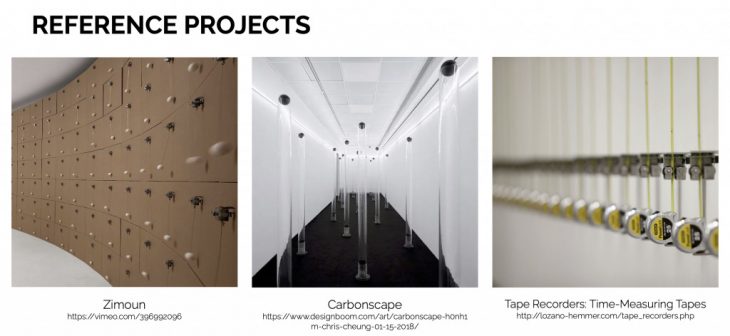
Noise pollution is a danger to human health but is often disregarded due to lack of awareness. It is defined as “regular exposure to elevated sound levels that may lead to adverse effects in humans or other living organisms.” and has been known to induce hypertension, hearing loss, dementia, cardiovascular dysfunction, psychological dysfunction, as well as affect sleep and child development.
The danger and intensity of noise/sound can be measured in dB (decibels), which is the intensity. According the World Health Organisation, when sounds are below the level of 70 dB, they can be considered safe for most living organisms regardless of length of exposure. However when the level is above 85 dB constantly for over 8 hours this can be dangerous.
The 2020 COVID-induced global lockdown has introduced a new challenge where many are forced to work from home. This study aims to document the types of noise levels that come with working at home, and the danger they may or may not bring.
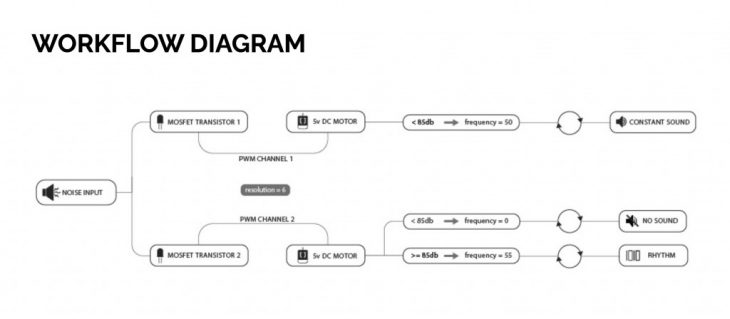
The data output representation is very important, and therefore translating the audio threshold signals into melody is a great way to sonically visualize noise pollution. The noise input uses a loudness sensor connected to an ESP32-WROOM-32 board, while the receiver is an M5Stack connected to motors. The signals are transferred over WiFi between the ESP32 board and the M5Stack using Arduino. The time update between readings is 2000ms, and the minimum/maximum values of the sensor is 0-100, with a threshold of 85.
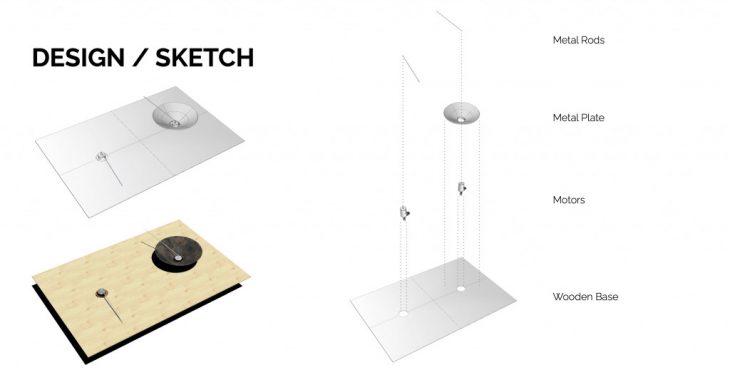
The mini symphony will be dictated by the threshold of dangerous noise as defined by the World Health Organization, which is 85 dB. Two metal rods connected to motors will spin, one against a metal plate, and the other on the wooden base, creating different sounds. The first rod will spin when the noise input is between 0-85 dB, and once the noise reaches the threshold of 85 dB, it will activate the second metal rod to spin which will alter the melody.
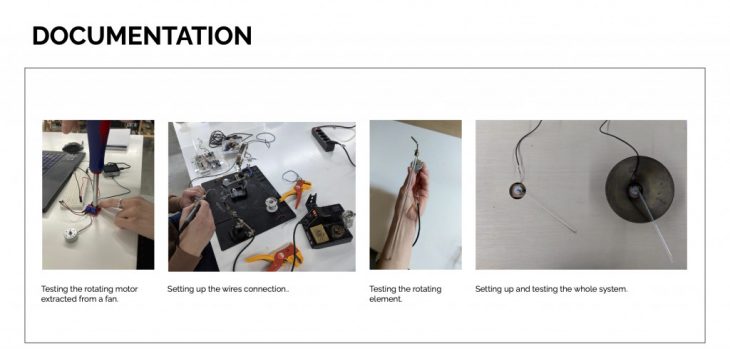
TUMULTUM is a project of IAAC, Institute for Advanced Architecture of Catalonia developed at the Master in Advanced Architecture in 2020/2021 by
Student: Faisal U-K, Michelle Bezik, Matvei Genne
Faculty: Angel Munoz, Christian Rizzuti
